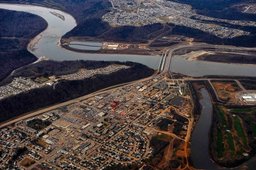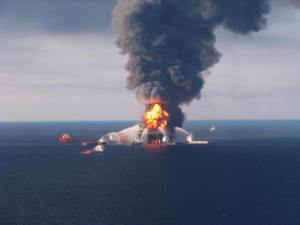http://news.sciencemag.org/sciencenow/2012/12/coral-reefs-could-be-decimated-b.html
by Eli Kintisch on 20 December 2012, 1:15 PM | 1 Comment
Barrier falling. Oceanographers have blamed bleaching of Porites coral from Australia’s Great Barrier Reef on warming water temperatures, ocean acidification, and pollution.
Credit: Louis Wray/Creative Commons
Nearly every coral reef could be dying by 2100 if current carbon dioxide emission trends continue, according to a new review of major climate models from around the world. The only way to maintain the current chemical environment in which reefs now live, the study suggests, would be to deeply cut emissions as soon as possible. It may even become necessary to actively remove carbon dioxide from the atmosphere, say with massive tree-planting efforts or machines.
The world’s open-ocean reefs are already under attack by the combined stresses of acidifying and warming water, overfishing, and coastal pollution. Carbon emissions have already lowered the pH of the ocean a full 0.1 unit, which has harmed reefs and hindered bivalves’ ability to grow. The historical record of previous mass extinctions suggests that acidified seas were accompanied by widespread die-offs but not total extinction.
To study how the world’s slowly souring seas would affect reefs in the future, scientists with the Carnegie Institution for Science in Palo Alto, California, analyzed the results of computer simulations performed by 13 teams around the world. The models include simulations of how ocean chemistry would interact with an atmosphere with higher carbon dioxide levels in the future. This so-called “active biogeochemistry” is a new feature that is mostly absent in the previous generation of global climate models.
Using the models’ predictions for future physical traits such as pH and temperature in different sections of the ocean, the scientists were able to calculate a key chemical measurement that affects coral. Corals make their shells out of the dissolved carbonate mineral known as aragonite. But as carbon dioxide pollution steadily acidifies the ocean, chemical reactions change the extent to which the carbonate is available in the water for coral. That availability is known as its saturation, and is generally thought to be a number between 3 and 3.5.
No precise rule of thumb exists to link that figure and the health of reefs. But the Carnegie scientists say paleoclimate data suggests that the saturation level during preindustrial times—before carbon pollution began to accumulate in the sky and seas—was greater than 3.5.
Click to launch ScienceNow reader survey
The models that the Carnegie scientists analyzed were prepared for the major global climate report coming out next year: the Intergovernmental Panel on Climate Change report. The team compared the results of those simulations to the location of 6000 reefs for which there is data, two-thirds of the world total. That allowed them to do what amounted to a chemical analysis of future reef habitats.
In a talk reviewing the study at the fall meeting of the American Geophysical Union earlier this month, senior author and Carnegie geochemist Ken Caldeira showed how the amount of carbon emitted in the coming decades could have huge impacts on reefs’ fates. In a low-emissions trajectory in which carbon pollution rates were slashed and carbon actively removed from the air by trees or machines, between 77% and 87% of reefs that they analyzed stay in the safe zone with the aragonite saturation above 3.
“If we are on the [business as usual] emissions trajectory, then the reefs are toast,” Caldeira says. In that case, all the reefs in the study were surrounded by water with Aragonite saturation below 3, dooming them. In that scenario, Caldeira says, “details about sensitivity of corals are just arguments about when they will die.”
“In the absence of deep reductions in CO2 emissions, we will go outside the bounds of the chemistry that surrounded all open ocean coral reefs before the industrial revolution,” says Carnegie climate modeler Katharine Ricke, the first author on the new study.
Greg Rau, a geochemist at Lawrence Livermore National Laboratory in California, says the work sheds new light onto the future of aragonite saturation levels in the ocean, also known as “omega.” “There is a very wide coral response to omega—some are able to internally control the [relevant] chemistry,” says Rau, who has collaborated with Caldeira in the past but did not participate in this research. Those tougher coral species could replace more vulnerable ones “rather than a wholesale loss” of coral. “[But] an important point made by [Caldeira] is that corals have had many millions of years of opportunity to extend their range into low omega waters. With rare exception they have failed. What are the chances that they will adapt to lowering omega in the next 100 years?”
Special thanks to Doug Fenner and the NOAA Coral-list.

